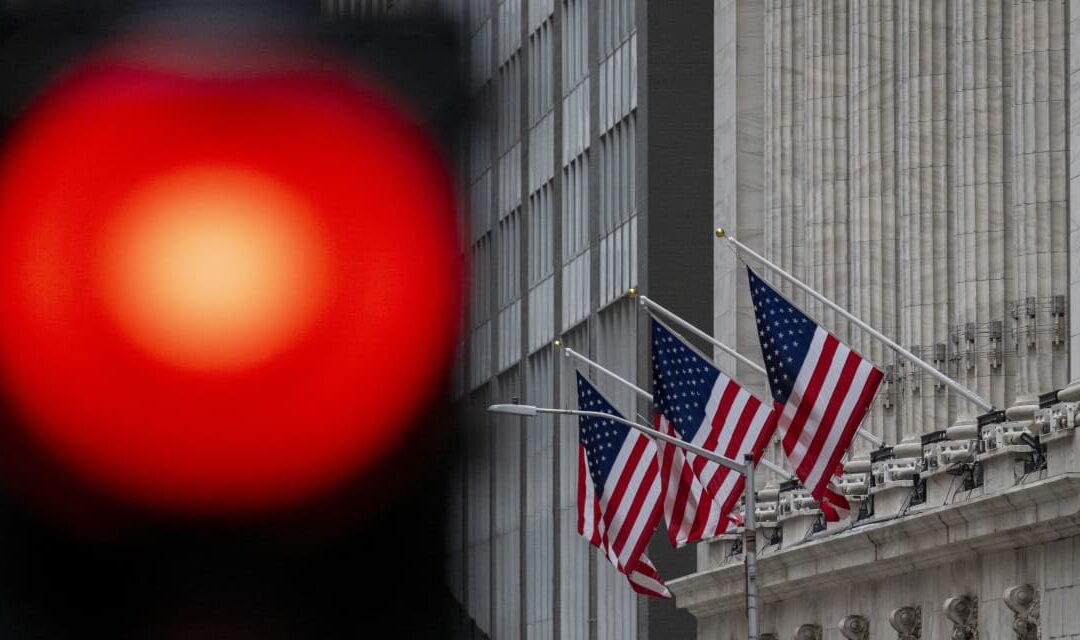The U.S. stock market’s case of “bad breadth” is only getting worse as U.S. stocks climb further into record territory — a trend that is making even some stalwart market bulls skeptical.
“The current divergence is enough to warrant caution as a few indices race into new high territory,” said Craig Johnson, chief market technician at Piper Sandler, in a report prepared for clients and shared with MarketWatch.
Johnson has a year-end target for the S&P 500
SPX
to finish 2024 at 5,050 points. As of midday trading on Monday, the index was within 2.5% of that level. But Johnson noted that deteriorating market breadth could be signaling a near-term peak for stocks.
For those who are unfamiliar with the term, “bad breadth” has become a catchphrase used by market strategists and portfolio managers to describe the phenomenon whereby only a handful of stocks are driving the main indexes higher.
The poster children for this trend have been the “Magnificent Seven,” a group of seven megacap technology stocks that drove the bulk of the S&P 500’s 24% advance in 2023.
But since the start of the year, the number of elite stocks responsible for the bulk of the S&P 500’s gains has continued to shrink. Johnson and other analysts have taken to calling this revised group of megacap tech leaders the “Fantastic Four.”
These four stocks have all seen double-digit gains since the start of the year, or close to it: Microsoft Corp.
MSFT,
is up 8.1%, Nvidia Corp.
NVDA,
has climbed 37.7%, Meta Platforms Inc.
META,
has risen 31.2% and Amazon.com Inc.
AMZN,
has gained 11.2%, as of Friday’s close.
According to Piper Sandler’s Johnson, these four stocks have contributed roughly 70% of the S&P 500’s 4% year-to-date gain through Friday.
What companies are missing from the “Fantastic Four?” The group excludes Tesla Inc.
TSLA,
which has shed nearly 30% since the start of the year through Friday, as well as Apple Inc.
AAPL,
which is down roughly 3% since Jan. 1, and Alphabet Inc.
GOOGL,
‘s Class A shares, which are up just 3.5% since the start of the year, Johnson said.
The market’s lopsided performance reached a fresh milestone on Friday, when the S&P 500’s 1.1% advance was driven almost entirely by shares of Meta and Amazon. Among stocks trading on the New York Stock Exchange, the number of shares that finished lower on Friday outnumbered the number of shares that traded higher by a two-to-one ratio.
According to David Rosenberg, the founder of Rosenberg Research and a former Merrill Lynch economist, such extreme divergence with the S&P 500 up 1% or more has occurred on only one other trading day in the past 53 years.
That day? Oct. 20, 1987: the day after “Black Monday,” when the Dow fell nearly 23% in a single session, still the biggest recorded decline in its history.
Rosenberg, who has been bearish on U.S. stocks for some time, also pointed out that the advance-decline ratio for the Nasdaq was similar to that of the NYSE, with the number of declining stocks outnumbering gainers by one-and-a-half to one.
Additionally, other measures popular with market strategists are also showing signs that the market may be due for a near-term pullback. As Johnson noted, market sentiment appears to be growing stretched, with bullish sentiment climbing to 49.1% among respondents, according to the latest American Association of Individual Investors’ weekly poll released late last week. That is close to levels previously associated with temporary highs in the market, Johnson pointed out.
Another bullish strategist said seasonal factors could soon become a headwind for stocks.
“Although the general sentiment of the market right now is positive, it’s worth asking ourselves, have we priced in a little too much good news, at least in the near term?” said Mark Hackett, chief of investment research at Nationwide.
“Over the last two years, and especially during election years, this point on the calendar — February through March — tends to take a dip. Coupled with elevated sentiment and positioning, I expect to see a sideways to slightly negative move over the next six to eight weeks as we get through seasonal choppiness. After that, my longer-term outlook for the year remains positive.”
See: The stock market often suffers in February. It’s worse in election years.
After finishing Friday’s session at fresh record highs — including the seventh record close for the S&P 500 this year — U.S. stocks kicked off the new week in the red. The S&P 500 was down 0.5% at 4,936 in midday trading, after Federal Reserve Chairman Jerome Powell told “60 Minutes” in an interview that aired Sunday evening that he and other senior Fed officials are still trying to determine the right time to begin cutting interest rates.
Meanwhile, the Dow Jones Industrial Average
DJIA
was down 350 points, or 0.9%, at 38,306, while the Nasdaq Composite
COMP
— which finished Friday at its highest close in two years — had fallen 0.4% at 15,564.









